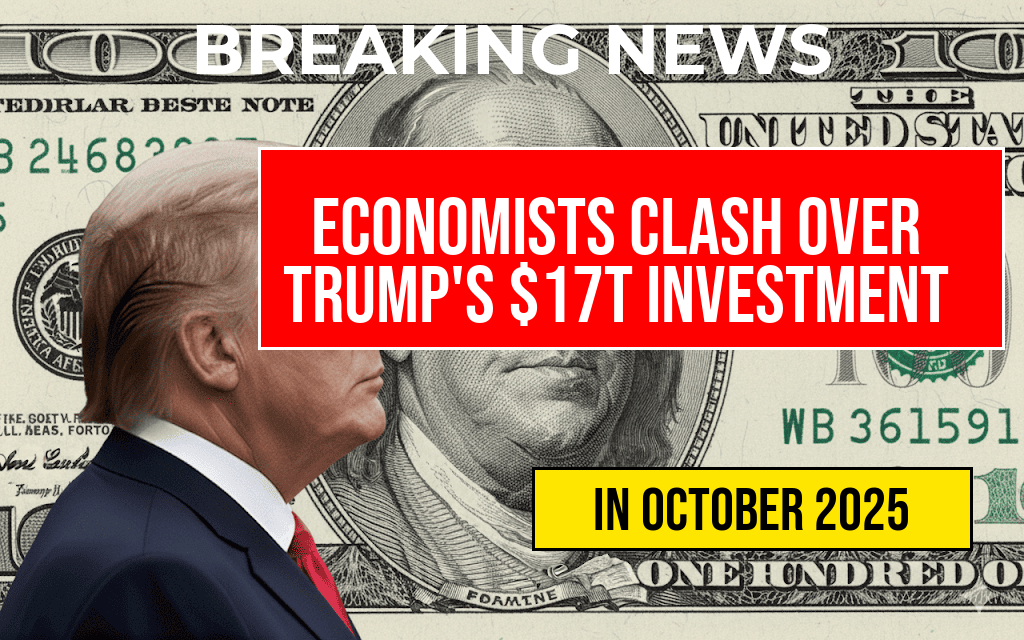Recent estimates suggesting that former President Donald Trump’s global investment portfolio could be valued at approximately $17 trillion have ignited a vigorous debate among economists, policymakers, and financial analysts. While some hail the figure as a testament to Trump’s extensive international influence and business reach, others question its accuracy and the methodology used to derive such a sweeping valuation. The controversy underscores larger questions about the transparency of private assets, the challenges in quantifying international investments, and the potential impact of these figures on global economic perceptions. As analysts dissect the numbers and their implications, the debate reveals deeper divisions over how best to interpret and leverage private sector influence in the shifting landscape of global finance.
Understanding the $17 Trillion Estimate
At the heart of the controversy lies a report published by a prominent financial think tank that attempted to quantify Trump’s worldwide investment footprint. According to the report, Trump’s holdings span multiple continents, encompassing real estate, private equity, licensing agreements, and other assets that collectively reach an estimated $17 trillion. This figure positions Trump among the world’s most significant investors, comparable in size to some of the largest sovereign wealth funds and multinational corporations.
Supporters argue that such an estimate underscores Trump’s extensive private business empire and his ability to influence global markets. They point to his ownership of iconic properties, licensing deals, and a vast network of business interests across North America, Europe, and Asia. Critics, however, express skepticism about the accuracy of these calculations, emphasizing the difficulty in appraising private assets, especially those held through complex corporate structures or off-shore accounts.
Points of Contention Among Economists
Methodological Challenges
One of the primary sources of disagreement revolves around the methodology used to arrive at the $17 trillion figure. Estimates of private wealth and investments often rely on indirect data, such as property values, corporate revenues, and licensing income, which may not fully account for debt, liabilities, or market fluctuations. Some experts argue that the report’s assumptions might inflate the actual value, especially in cases where assets are difficult to evaluate precisely.
Transparency and Data Availability
Unlike public companies, which are required to disclose detailed financial information, private holdings—especially those held through shell companies or foreign entities—are often opaque. This opacity complicates efforts to produce reliable estimates. Critics point out that without access to detailed financial disclosures from Trump’s private entities, any figure remains speculative at best.
Implications for Global Markets
Proponents contend that recognizing the scale of Trump’s investments could influence perceptions of his economic influence, potentially impacting international negotiations and policy decisions. Conversely, skeptics warn that overestimating private wealth might distort market understanding or lead to unwarranted speculation about political influence, especially given Trump’s unique business background.
Reactions from the Financial Community
| Source | Position | Comments |
|---|---|---|
| Forbes | Reserved | Highlights the difficulties in valuing private assets and calls for more transparent data. |
| Wikipedia Economics | Critical | Notes that private wealth estimates are inherently uncertain and should be interpreted cautiously. |
| Bloomberg | Supportive | Emphasizes the importance of recognizing the scale of private investments in shaping global economic narratives. |
Legal and Political Dimensions
The debate also intersects with legal and political considerations. Some analysts suggest that framing Trump as a billionaire with a $17 trillion portfolio could influence public opinion ahead of upcoming elections. Others raise questions about potential conflicts of interest or the need for greater financial transparency among high-profile political figures.
Legal experts point out that, while public disclosure of certain assets is mandated for government officials, private holdings generally remain confidential unless litigated or voluntarily disclosed. Consequently, the actual scope of Trump’s private investments continues to be a matter of speculation and investigation.
Broader Context and Future Outlook
The controversy over Trump’s estimated global investments exemplifies larger issues within the intersection of private wealth and public perception. As international markets evolve and data collection methods improve, more precise estimations may emerge. Meanwhile, this debate emphasizes the importance of transparency and standardized valuation practices in understanding the true scale of private economic influence.
As the discussion persists, policymakers, investors, and the public will need to navigate the nuances of private wealth estimation carefully. Recognizing the limitations of current data while appreciating the potential significance of such figures remains crucial in forming informed opinions about individuals like Trump and their role in the global economy.
Frequently Asked Questions
What is the main controversy surrounding Trump’s estimated global investment figures?
The primary controversy revolves around the accuracy and credibility of Trump’s estimated 17 trillion dollar global investment figures, with economists debating whether these estimates are realistic or inflated.
How do economists differ in their perspectives on Trump’s investment estimates?
Economists are divided between those who believe the figures represent a substantial and achievable economic boost and others who argue that the estimates are exaggerated and lack supporting empirical evidence.
What factors influence the debate over the validity of these investment figures?
The debate is influenced by factors such as economic data, investment trends, and the methodologies used to compile and verify the global investment estimates.
What potential impacts could these investment figures have on global markets?
If perceived as accurate, these figures could boost market confidence and attract further investment, whereas skepticism might lead to market volatility and cautious investor behavior.
Why is there a significant debate among economists regarding Trump’s global investment estimates?
The debate stems from differing interpretations of economic data, the methodology behind the estimates, and the broader implications for policy making and international economic relations.

Leave a Reply